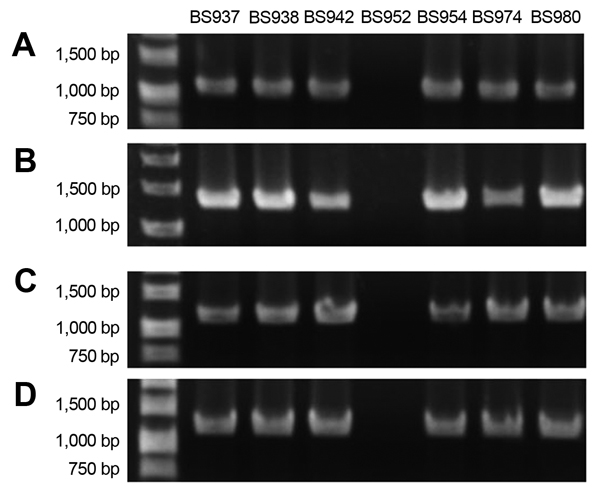Volume 20, Number 10—October 2014
Research
Clinical Isolates of Shiga Toxin 1a–Producing Shigella flexneri with an Epidemiological Link to Recent Travel to Hispañiola
Figure 5

Figure 5. PCR results from representative clinical isolates illustrate that the Shiga toxin 1a gene (stx1a) is phage encoded and inserted into the S1742 locus of Shigella flexneri. PCRs based on the primer scheme detailed in Figure 4 are shown for 6 stx1a-positive strains (BS937, BS938, BS942, BS954, BS974, BS980) and 1 stx1a-negative isolate (BS952). To show that stx1a is phage encoded, we used primer pairs Stx1R2/Phage_stxR2 (A) and Phage_stx1F2.Stx1F2 (B). To analyze the insertion of ϕPOC-J13 into locus S1742, we used primer pairs S1742_up/Stx_phage_up (C) and Stx_phage_dn/S1742_dn (D).
Page created: September 12, 2014
Page updated: September 12, 2014
Page reviewed: September 12, 2014
The conclusions, findings, and opinions expressed by authors contributing to this journal do not necessarily reflect the official position of the U.S. Department of Health and Human Services, the Public Health Service, the Centers for Disease Control and Prevention, or the authors' affiliated institutions. Use of trade names is for identification only and does not imply endorsement by any of the groups named above.